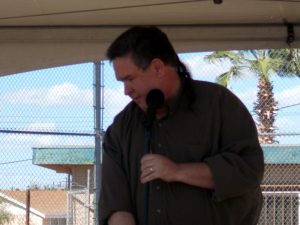This is one of the core storytelling tips for going from good to great in storytelling: listen before you speak.
Watch people. 👀
Listen to how people talk. 👂🏽
Hear them beyond the words they speak. 🎯
SEE what they are doing. 💚
This is true, frankly, of most human interactions. What are others saying? What do they truly mean?
As a storyteller, my programs are in constant flux. I bring a repertoire of stories to an event, not a program. For example, several years ago, our team participated in an arts festival in a local city. All morning long, most of the twenty-minute acts had some component of percussion or drumming. 
Let’s be flexible.
Appearing onstage before my second set was a group that held a drumming circle. Now, the newbie storyteller thinks like an actor (“some of my best friends are actors”) and would follow that with the set they prepared.
On the other hand, the storyteller with some experience looks at this series of presentations and says, “How do I latch into that to enhance to audience experience?”
I asked the director of the drum circle to stay a few minutes longer and to create a “storytelling moment” with a drum-focused story I had in my repertoire of stories. It was great fun, spontaneous and created an excellent link with the event and a good transition into other stories I had planned to tell.
So, what is great storytelling?
I am not telling you this to brag about my flexibility; I am telling you this to encourage you to listen (head, heart, ears) to what goes around you…and create great storytelling moments in all settings where you bring the story alive.
Business and Faith-based storytellers, I am looking at y’all especially: it appears that many speakers in these fields bring a program of your agenda instead of looking at what is happening in your (location) and using that listen/watch/see to create good story transitions.
Remember that you are storytelling “with” instead of “at” your audience.
Tags: advice connections crafting hear how to listen speak storyteller storytelling tips
